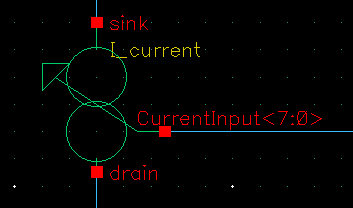What are the differences between NMOS and PMOS devices in a CMOS technology?
NMOS transistors have some inherent performance advantages over the PMOS transistors, but also drawbacks.
An interesting fact:
Transistors are regarded as the most produced item or device in human history
Let’s start comparing NMOS vs PMOS…
NMOS vs PMOS devices
The most common technology used in Integrated Circuits is CMOS, which combines both NMOS and PMOS transistors on the same chip, aiming to leverage the advantages of both types while mitigating their disadvantages.

A Different Construction
NMOS and PMOS are complementary devices. NMOS uses N-type doped semiconductors as source and drain and P-type as the substrate, whereas the PMOS is the opposite.
The charge carriers are not the same:
- NMOS: Use electrons as charge carriers.
- PMOS: Use holes as charge carriers.
In the following picture below, it can be seen the section of both NMOS and PMOS transistors. As we can see, PMOS devices are built over an n-well body.
In the real world, without using any special structure, we have only one substrate in a silicon wafer, typically the p-substrate.

So, to build NMOS and PMOS devices on the same wafer, we need to create an n-well embedded the p-substrate, as shown in the picture below.

Differences and NMOS Advantages
NMOS is 2.5x faster than PMOS
The mobility of electrons in the n-channel MOSFETs is almost 2.5 times higher than in p-channel MOSFETS. The mobility is determined by the carriers in NMOS and the holes in PMOS. The carriers mobility (e-) is more than 2 to 4 times greater than that the holes. In other words, electron mobility is significantly higher than of hole mobility. Specifically, the mobility at the free electrons (e-) are 2 to 4 than the holes (h+).
It depends on the process but roughly in a standard CMOS technology it follows the following relation:

Higher transconductance
The higher mobility of electronics leads to higher transconductance (gm) in NMOS for a same size device. Therefore, a NMOS differential pair would provide more gain than an equivalent same size and same bias PMOS differential pair.
NMOS transistors are faster due to smaller junction areas. The speed is limited by the RC internal parasitics.
Ron resistance in NMOS
The small-signal resistance r_on is higher for NMOS than PMOS at the same W/L dimensions and bias current. A NMOS can drive larger currents than a PMOS with the same overdrive voltage.
Large signal on-resistance Rds (= Vds/Ids) is lower for NMOS than for PMOS.
To obtain the same impedance, NMOS devices require only half of the size of PMOS devices under the same operation conditions.
Silicon area
For the same output current, NMOS transistors have a smaller footprint than PMOS transistors.
Complex NMOS-based circuits needs half the size of the same circuit built with PMOS. The same circuit would occupy half the area. In general, NMOS will use less area.
Shift in the Vth of NMOS
Most of the mobile contaminants are positively charged. Variations in the doping levels during fabrication can shift the threshold voltage. For instance, we can find a fixed positive charge at the Si-SiO2 interface coming from the fabrication process. This results in a shift of the threshold voltage.
PMOS is less noise-prone
The physical properties of PMOS devices result in significantly lower flicker noise, with noise immunity leading to up to 5 times less flicker noise compared to NMOS devices.
As we talked before, PMOS transistors have lower mobility. I.e., holes have lower mobility than electrons. This slower movement and the physical nature of holes lead to fewer interactions with defects and impurities in the silicon lattice, resulting in lower noise levels in PMOS devices.
Holes, the charge carriers in PMOS transistors, are less susceptible to trapping and detrapping events compared to electrons, the charge carriers in NMOS transistors. This is due to differences in how holes and electrons interact with the lattice structure of the semiconductor.
AS a conclusion, CMOS technology combines both NMOS and PMOS transistors to achieve a balance of performance and efficiency, making it the most common technology used in integrated circuits.
The NMOS devices are slightly more utilized due to its advantages, however many applications require the polarization characteristics of the PMOS.




